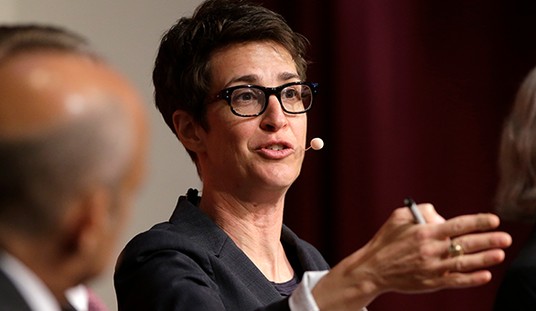

It’s a bunch of crap.
Batman and Spiderman, princes of the respective DC and Marvel universes, are famous for this. By keeping from killing, in their minds, they keep themselves from becoming bad guys. They go to sleep, consciences clear that they are not killers.
Tell that to the citizens of New York and Gotham who die whenever the Green Goblin, Carnage or the Joker go on a rampage.
Spiderman is famous for saying that with great power comes great responsibility. That philosophy led him to wear tights and protect the Big Apple. Bruce Wayne wanted to clean up the city to which his family dedicated their lives.
But these heroes exercise their power in half-measures.
They’re fighting villains with incredibly destructive powers, that police can’t stop and super prisons can’t contain. In letting them live to fight another day, superheroes engage in the equivalent of leaving live hand grenades in a playground.
Dead supervillains can’t kill citizens.
By choosing to let their enemies live to fight another day, the superheroes share some measure of blame for the ensuing deaths. Indulging their sentimentality is a narcissistic cowardice.
Failing to look at this guilt serves as a major flaw in the morality tales and serves a terrible lesson in the use of power, though it’s one the authors don’t intend.
Real life gives us a counter-example to the facile comic book morality in Chris Kyle. America’s most successful sniper killed in one of the most intimate ways, hunting individuals and seeing them through the scope before he pulled the trigger. A patriot and hero, Kyle used his amazing skill to protect his fellow American servicemen.
That meant killing the enemy. He had to take the shot on men, women and children.
Kyle brought the psychic scars home with him. He suffered for his efforts to protect others. And in that protection, he not only saved the lives of those to whom he acted as overwatch but the terrorists’ future victims.
And given that Al Qaeda in Iraq became ISIS, we know that there would be future victims.
Unfortunately, we have a political class that takes the Batman view of fighting rather than the Kyle method when it comes to fighting Islamic jihadists.
We are at war.
We know that because ISIS has declared its war and bragged about showing up in New York.
State Department spokesman Marie Harf talks about responding to this threat with Tweets and a jobs program. She might as well have quoted the Green Arrow, saying that we can’t win a war by killing the enemy – I think she misses the actual definition of war here – but we need jobs programs.
https://www.youtube.com/watch?v=Sd0_U87nyoU
We’ve played by comic book rules for over a decade in the War on Terror.
Our invasions of Iraq and Afghanistan looked like they’d been planned by sophomoric moral philosophy of Peter Parker, not the hard realities of war we’ve known since Sun Tzu and Clausewitz.
President George W. Bush’s use of force showed tied hands. Just look at the looting of Baghdad in the initial days of the Iraq invasion. For all of the vaunted “shock and awe” of military planners, the failure to use necessary force presaged a war focused on winning hearts and mind. He wanted the enemy to love us and in turn created an insurgency that mocked and despised us.
A decade later, ISIS has established a caliphate, something the world had not seen in a century. The Joker and Doctor Octopus are back, cutting off heads off Christians.
Yet President Barack Obama will not even speak our enemy’s name and the upshot of his “terror summit” is that we’ll work harder to make Muslims feel better. That, along with some judicious #HashtagActivism, will make things right.
Half-measures in fighting our enemies might allow Presidents Bush and Obama to sleep easier at night, thinking that their hands are cleaner than they might otherwise be if they called for the sort of wars America saw in the past. They console themselves that they have not ordered Sherman’s March to the Sea or the burnings of Dresden and Tokyo.
They should find no consolation in these facts but condemnation. They should be Lady Macbeth, seeking to wash away the blood on their hands.
Here’s the thing. With the great power of the Presidency comes the responsibility of losing sleep.
The Civil War and Second World War share two characteristics.
One is that they were savage, bloody conflict.
The second is that America won clear and unambiguous victories. The South has not risen again. The Axis powers have spent seven decades without threatening world peace.
Our enemies knew they were beaten. The methods that brought them to that conclusion were harsh, unspeakably harsh.
But they were effective and in their effectiveness, they saved lives. In ending World War II with the atomic bombs, hundreds of thousands, perhaps millions, of lives were saved.
Our grandfathers fought a hero’s war with its attendant nightmares. We rightly look at them with gratitude for the victories they forged.
What will our grandchildren say about the Comic Book Wars?
*******
Join the discussion on Twitter. And submit your answer to Aaron’s question for publication at PJ Lifestyle: DaveSwindlePJM [AT] Gmail.com
The essay above is the second in volume 2 of the cultural discussions between the writers of PJ Lifestyle and Liberty Island exploring the history of counter-cultures, the future of conservatism and the role of new, emerging counter-cultures in restoring American exceptionalism.
Volume II
- Frank J. Fleming on February 26, 2015: What Is the Future of Government? Why It Won’t Look Like Star Trek
See the first volume of articles from 2014 and January and February 2015 below:
2014 – Starting the Discussion
- Sarah Hoyt, March 22 2014: Interview: Adam Bellow Unveils New Media Publishing Platform Liberty Island
- David S. Bernstein, June 20 2014: What Is Liberty Island?
- Adam Bellow at National Review, June 30 2014 kicking off the discussion: Let Your Right Brain Run Free
- Dave Swindle on September 7, 2014: Why Culture Warriors Should Understand the 10 Astounding Eras of Disney Animation’s Evolution
- Dave Swindle on September 9, 2014: The 50 Greatest Counter-Culture Films of All Time, Part I
- Dave Swindle on September 19, 2014: The 50 Greatest Counter-Culture Films of All Time, Part II
- David S. Bernstein on November 19, 2014: 5 Leaders of the New Conservative Counter-Culture
- Dave Swindle on November 25, 2014: 7 Reasons Why Thanksgiving Will Be My Last Day on Facebook
- Kathy Shaidle on November 25, 2014: Is America Overdue for a Satanic Revival? (Part One)
- Dave Swindle on December 2, 2014: My Growing List of 65 Read-ALL-Their-Books Authors
- Kathy Shaidle on December 3, 2014: Is America Overdue for a Satanic Revival? (Part Two)
- Mark Elllis on December 9, 2014: Ozzy Osbourne and the Conservative Tent: Is He In?
- Aaron C. Smith on December 22, 2014: The Villains You Choose
January 2015 – Volume I
- Paula Bolyard on January 1, 2015: 7 New Year’s Resolutions for Conservatives
- Susan L.M. Goldberg on January 1, 2015: The Plan to Take Back Feminism in 2015
- Kathy Shaidle on January 4, 2015: Did the 1960s Really Happen? (Part One)
- Andrew Klavan on January 5, 2015: In 2015 The New Counter-Culture Needs to Be Offensive!
- Clay Waters on January 5, 2015: The Decline and Fall of Russell Brand
- Mark Ellis on January 5, 2015: How Conservatives Can Counter the Likable Liberal
- Audie Cockings on January 5, 2015: Entertainers Have Shorter Lifespans
- Aaron C. Smith on January 6, 2015: How Mario Cuomo Honestly Defined Zero-Sum Liberalism
- Stephen McDonald on January 10, 2015: Why the New Counter-Culture Should Make Strength Central to Its Identity
- Stephen McDonald on January 16, 2015: The Metaphorical War
- Kathy Shaidle on January 19, 2015: Did the 1960s Really Happen? (Part Two)
- Frank J. Fleming on January 20, 2015: What if Red Dawn Happened, But It Was Islamic Terrorists Instead of Communists?
- Mark Ellis on January 21, 2015: Adam Carolla: The Quintessential Counterculture Conservative?
- Aaron C. Smith on January 29, 2015: Objection! Why TV’s The Good Wife Isn’t Good Law
February 2015
- David Solway on February 2, 2015: For a Song To Be Good, Must It Tell The Truth?
- Mark Ellis on February 6, 2015: President Me: Adam Carolla Vs. the Scourge of Narcissism
- David Solway on February 6, 2015: ‘Imagine’ a World Without the Brotherhood
- Kathy Shaidle on February 9, 2015: Was Rod McKuen the Secret Godfather of Punk Rock?
- Aaron C. Smith on February 10, 2015: Kick NBC While It’s Down: Use The Williams Scandal to Set the Terms of the 2016 Debates
- Spencer Klavan on February 12, 2015: How to Apologize for Your Thought Crimes
- Kathy Shaidle on February 16, 2015: David Byrne: Creepy Liberal Hypocrite
- David P. Goldman on February 18, 2015: Understanding This Bloody Truth About the Bible Will Save Your Life
- Lisa De Pasquale on February 20, 2015: Why American Sniper Is a Much Better Love Story Than Fifty Shades of Grey
- Spencer Klavan on February 24, 2015: How Bad Ideology Destroys Good TV: Why Glee Crashed and Burned









Join the conversation as a VIP Member